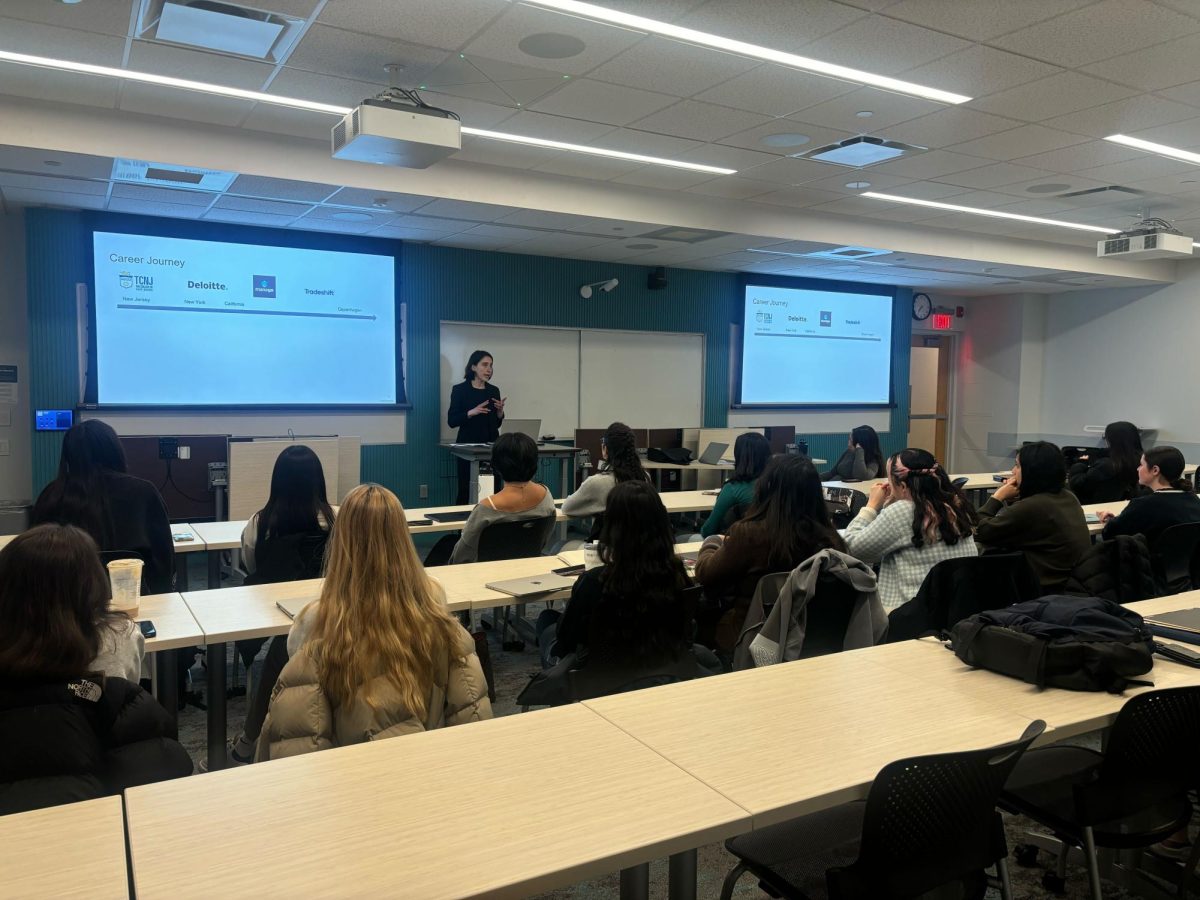By Ruthanne Tarantino, News Correspondent
It has happened to everyone on campus ‘- walking by Shillman Hall and thinking, ‘What are those kids doing?’
‘ It’s a simple scene:’ a line tied between two trees. A group of students are gathered, shoes off, laughing and talking with each other.’ As some engage in lively conversation, one from the group will balance himself onto the line with arms outstretched. If they are more skilled, they will begin to walk the line until they either reach the other end, or fall from losing their balance.’
While college is a time when most students hesitate to make themselves appear vulnerable, these acrobats display their physical abilities for the whole university to see.’
It’s called slacklining ‘- essentially tightrope walking between two trees on a one-inch tubular nylon strap. It is different from tightrope walking because of the ‘slack’ in the rope:’ There is a dip and sway in slacklining, compared to a tightrope, which does not have any sway. Slacklining originated as a base camp activity for climbers to do when they were bored.
Brendan Toohey, a junior chemical engineering major, said he was the one to bring this sport to Northeastern.’ His rock-climbing friends brought slacklining to his home town, and after trying it once, he fell in love with it and decided to bring it to Northeastern last summer when he was on co-op.’ He originally set up a line on Columbus Avenue but then brought in front of Shillman so he could attract more people.’
‘It was awkward at first, just by myself,’ he said.’
Then people started getting interested, trying it out and coming back.’ Two of these people were Dick Pruitt, a junior computer science major and Brad Hooker, a junior French and international affairs major.’
‘Basically I saw a guy on what looked like a tight rope and was like ‘What the heck is that guy doing?” Hooker said.’
The slackliners are not an official Northeastern club.’ They tried making it an official club last year, but encountered some red tape:’ To be a club, they would need members to sign waivers, which would hurt the spontaneous atmosphere of anyone strolling up to their spot in front of Shillman and casually trying to slackline, Toohey said. Additionally, Northeastern does not recognize slacklining as a sport, Pruitt said.
‘They told us: You can’t be a club, you have to be a club sport,’ Pruitt said. ‘They don’t consider it a sport, even though Boston University has a sanctioned slacklining club.’
Last, year Toohey said he looked into how Boston University got permission for its slacklining club.’ He found out the head of the club went around asking for signatures he said. Toohey, Pruitt and Hooker tried unsuccessfully to get signatures last year, but for now, the most formal organization they have is a Facebook group called Northeastern Slackliners and Freestyle Shoeing.
‘We don’t need a club for people to approach us and say, ‘Hey, can we try this out?” Pruitt said.’
Although Northeastern will not let them form a club, faculty and staff members do not give them any trouble for setting up their ropes on school property, the slackliners said. The groundskeepers’ only request was to put some cardboard in between the tree and the line to protect the long-term scar tissue of the tree.’
Club members even have approval from President Joseph Aoun, Hooker said.
‘He came by one day and talked to us and thought what we were doing was great,’ he said.’
These slackliners encourage people interested in trying to slackline not to be intimated.’ They are quick to offer a shoulder for people start with the initial step of just balancing still on the rope. The first goal is to balance, and then eventually walk across the line.’ More advanced moves include turning, walking backwards, jumping, and moving from standing to laying down.
‘It’s not exactly being athletic, it’s being calm and comfortable with yourself.’ Anyone can do it, from my perspective,’ Pruitt said.
As these juniors reach the end of their time at Northeastern in spring 2011, they said they believe the slacklining tradition will continue’ after they graduate because of the interest newcomers have expressed.’
‘We’re pretty open to having people try it,’ Hooker said.’ ‘It’s pretty easy, a lot of fun and good exercise.’








